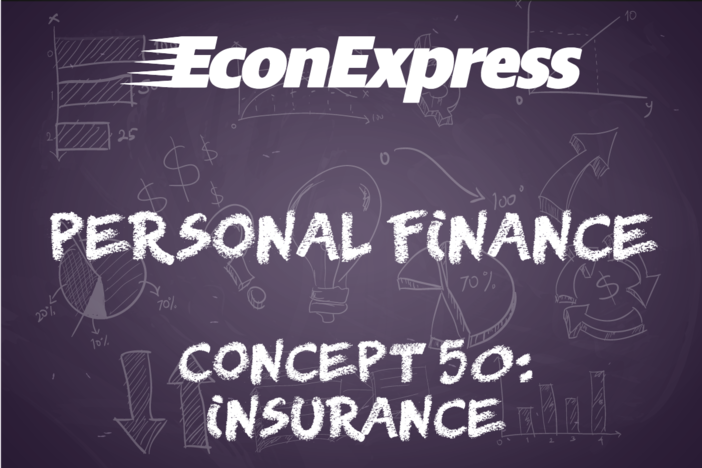Concept 44: Financial Institutions
Overview: Should you open an account at a bank or credit union? What's the difference anyway? Why are there so many commercials for title pawn lenders these days? This lesson explains.
Learn
Beginner

A financial institution is a company that provides financial services. In other words, they help consumers and other businesses manage their money. Banks are the most well-known and widely used, but there are many types of financial institutions, and understanding their differences is important when making financial choices.
Banks are the most common financial institution because they offer the most financial services. Checking accounts, savings accounts, home loans (mortgages), car loans, student loans, investment advice, ATMs, direct deposit and foreign currency swaps are just some of the many services banks offer. Most of these services require an account with the bank, and the bank charges fees for some. Banks are owned by shareholders who want to see the bank make a profit by providing these services and making smart loans that people repay with interest. Importantly, money in banks is insured by the Federal Deposit Insurance Corporation (FDIC) up to $250,000 per account.
Credit Unions are similar to banks in many ways with one very significant difference. Credit unions are owned and controlled by the members who have accounts in them. To be a part of a credit union, you must meet some kind of requirement like living in a certain area or working for a specific company. Navy Federal credit union, for example, is open to members of the armed services and their families. The benefit of this type of ownership is that the credit union is usually able to offer better terms to its members and more unique loans tailored to specific circumstances. The drawback is most credit unions are regionalized and can be difficult to use for people who travel frequently. They also do not usually offer as many services as banks. Money in credit unions is insured by the National Credit Union Association (NCUA), also up to $250,000 per account.
One is not necessarily better than the other, and many people use both banks and credit unions for different services. Ultimately, it is beneficial to your long-term financial health to use either a bank or credit union. The next section describes other financial institutions that people use instead of banks and credit unions that come with greater risks.
Intermediate

Payday Lenders and Title Pawn Lenders are examples of financial institutions that have very specific and narrow products. Payday lenders make short-term loans to people who need money right away. The borrower agrees to repay the loan on “payday.” Typically, these loans come with very high interest rates and confusing contracts that get people in trouble. The St. Louis Fed reported in 2019 that the nationwide average interest rate for a payday loan was a whopping 345% (compared to 10-28% for a bank loan). Title pawn lenders also charge extremely high interest rates, but tie the loan to some asset of the borrower like a vehicle, that becomes collateral for the loan. If the borrower fails to repay, the title pawn company can claim legal rights to the asset. As of December 2020, 30 states have outlawed title pawn lenders and 17 states have outlawed payday lenders.
Given these scary claims, why would anyone use these facilities? Payday lenders and title pawn lenders usually require very few - if any - credit checks. Since they are not trying to appease shareholders or members, they can make riskier loans and, therefore, people in emergency situations may find them appealing. While their use is generally discouraged, people who do use them need to be careful to not overborrow and carefully read and understand the terms of the loans.
Advanced

The unbanked population refers to people who do not use formal financial institutions like banks or credit unions at all. Underbanked individuals are people who make mostly cash transactions but may have a few interactions with a bank, like a savings account they rarely use, a credit card or a loan from a local bank. In 2018, the Federal Reserve estimated there were around 55 million unbanked or underbanked American adults. The Center for Financial Inclusion estimates around 1.7 billion adults around the world are unbanked.
Why does this matter? Not having a bank account likely means most legal transactions are being conducted with cash which, of course, requires large amounts of cash to be held constantly. This is inherently less secure than having money in a bank account. If you lose it or it’s stolen, it is gone. Remember that banks offer a wide range of financial services. Not interacting with a bank means unbanked and underbanked people often pay additional fees for services like check cashing, money orders and similar services and have no access to things like direct deposit, which means they may get delays in receiving things like federal payments, their paycheck or tax returns.
Additionally, being unbanked means a lack of records and proof of money management over time. When the need for a loan does arise, unbanked and underbanked individuals find it difficult to get a loan with good terms and often wind up using services like payday lenders. In good news, the FDIC reported in October 2020 that with more online and app-based banking options, the number of unbanked people is falling quickly in the United States.
Click a reading level below or scroll down to practice this concept.
Practice
Assess
Below are five questions about this concept. Choose the one best answer for each question and be sure to read the feedback given. Click “next question” to move on when ready.
Social Studies 2024
Compare services offered by different financial institutions, including banks, credit unions, payday lenders, and title pawn lenders.












